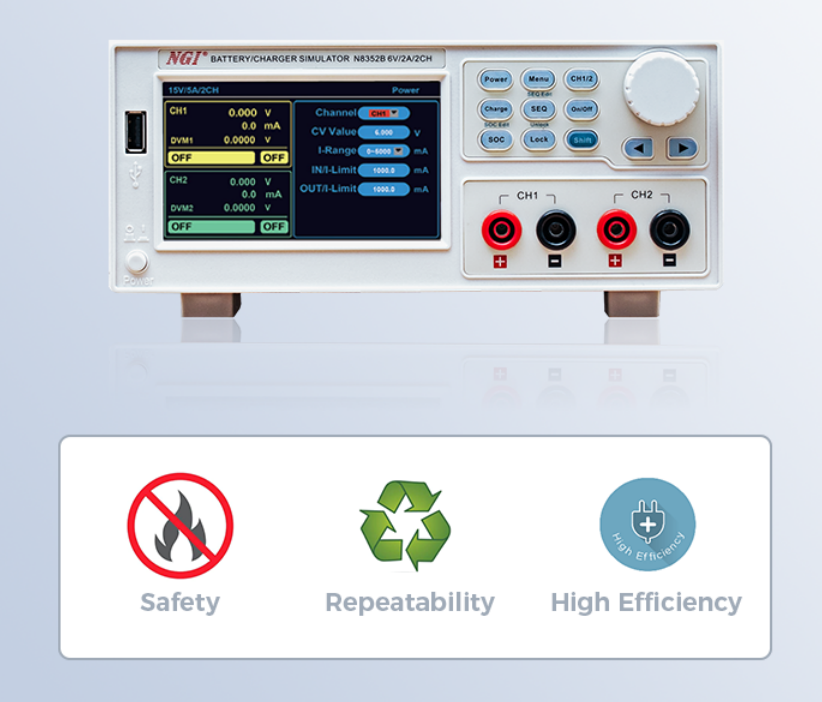Do you want to log out?




 March 23, 2021
March 23, 2021
1. Definition
A battery simulator is an electronic equipment that emulates numerous properties of a real battery. These properties are power, voltage, current, etc. The battery simulator supplies the required voltage, power, and current to the mobile device in the same manner as an actual battery. In a way, a simulator is a programmable electronic battery.

2. Advantages
Safety
The battery contains high energy storage. Under normal conditions, such as temperature, charge rate, and discharge rate, engineers can use the battery safely. However, some unexpected situations may occur during the test. During the design phase, the DUT may not work properly and cause the battery to be overcharged or over-discharged. Moreover, the DUT may malfunction or enter an unexpected state, which may absorb excessive current from the battery, resulting in fire, explosion, chemical leakage and other risks.
The battery simulator includes electronic protection circuits, such as overvoltage and overcurrent protection, which will interrupt the test when a problem occurs during the test.
Repeatability
Generally, by fully discharging the battery and then charging the battery to the desired state of charge, this will accelerate the battery aging and shorten the battery life. Battery performance will decrease over time. Engineers cannot guarantee that aging batteries will be charged to the required state of charge. Therefore, testing with aging batteries may lead to incorrect results.
Compared with testing with real batteries, battery simulators can obtain more consistent and repeatable test results. It eliminates the uncertainty associated with battery aging and can determine the state of charge of the battery.
High Efficiency
Usually, it takes several hours to fully charge a real battery. To improve test efficiency, engineers can use the battery simulator to quickly change the voltage to simulate the battery being charged, instead of waiting for the charger to charge the real battery.

3.Applications

4. Quick Selection
Series
Channels
Two-quadrant
Current
Voltage
Interface
N8352
2
Yes
1/2/3/5A
6/15/20V
LAN/RS232
N8358
8
Yes
1/2/3/5A
5/6/15V
LAN/RS232
N83624
24
No
1/3/5A
6/15V
LAN/RS232

















